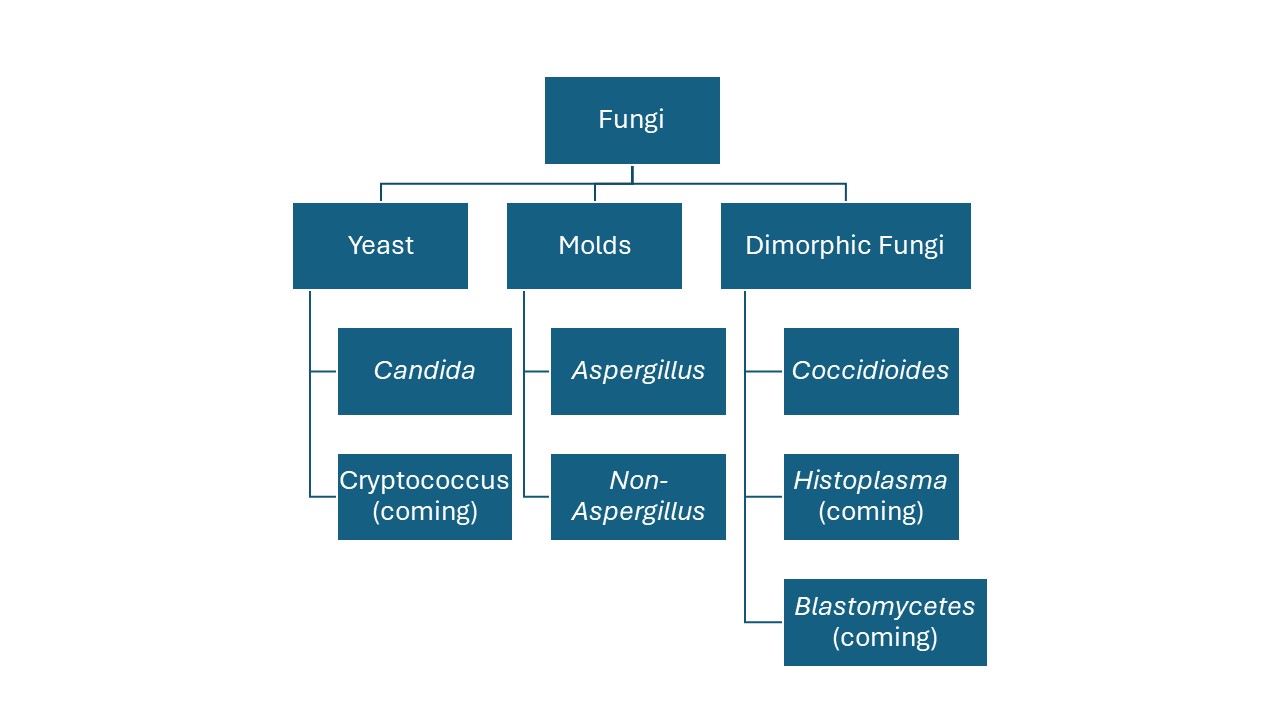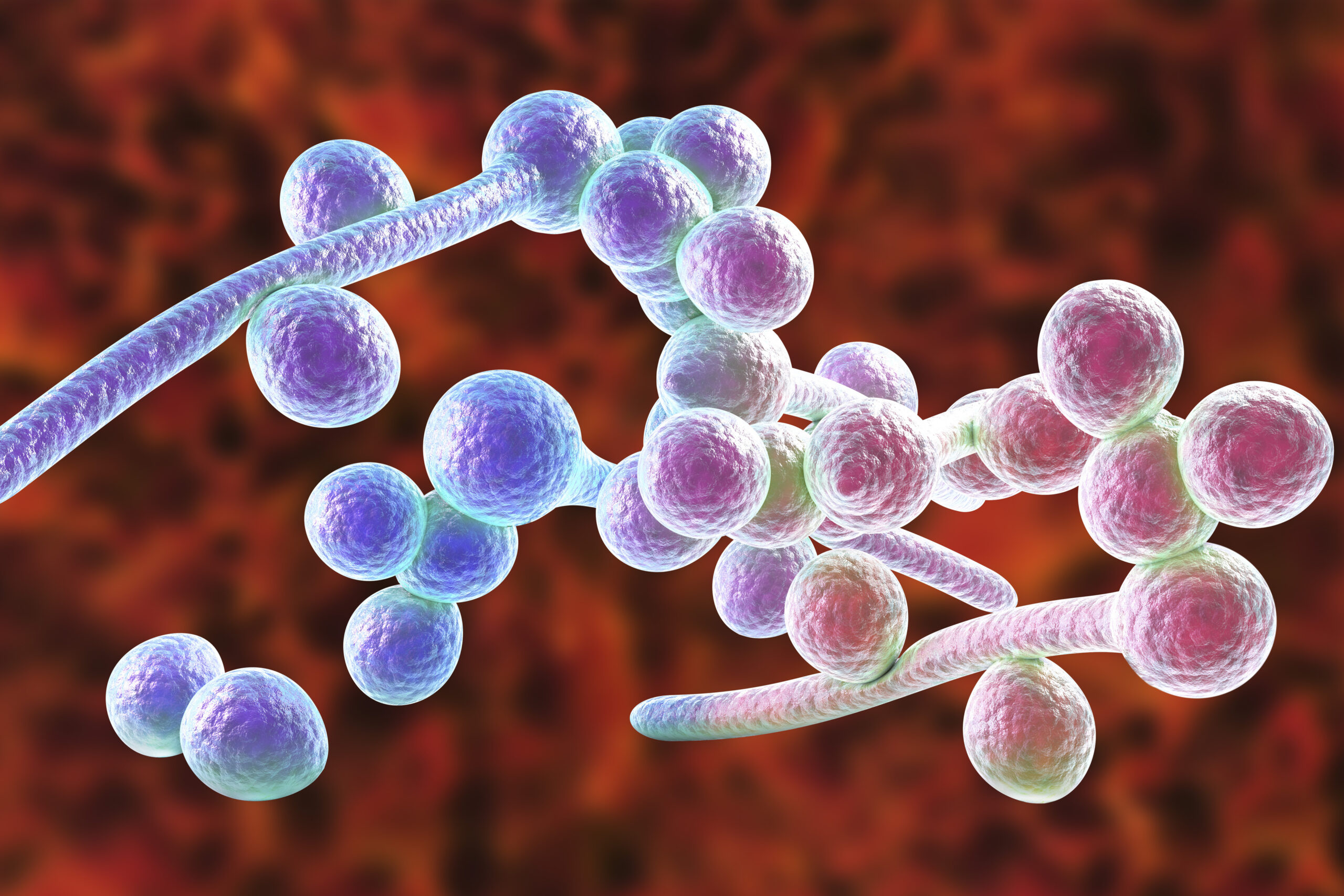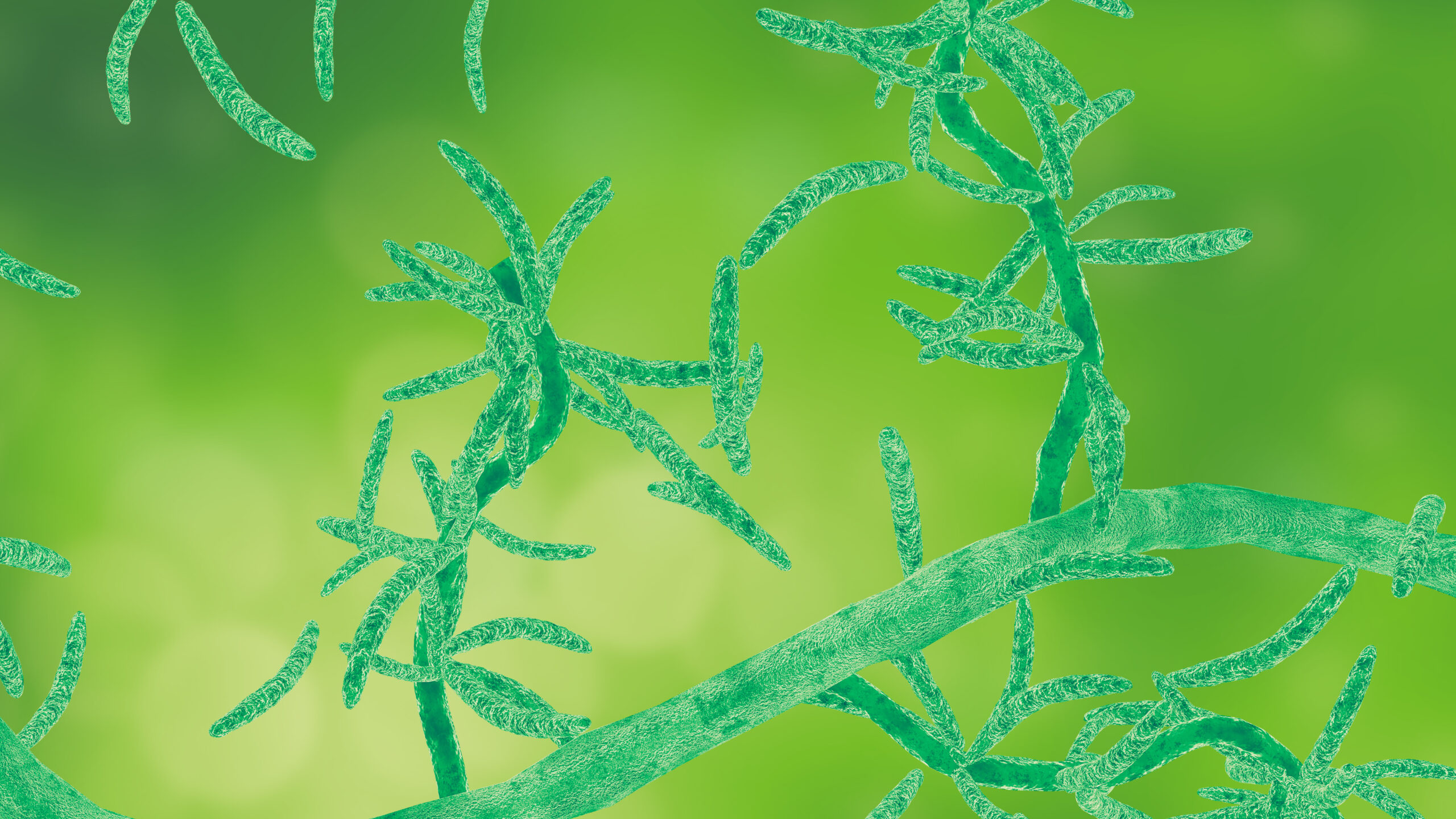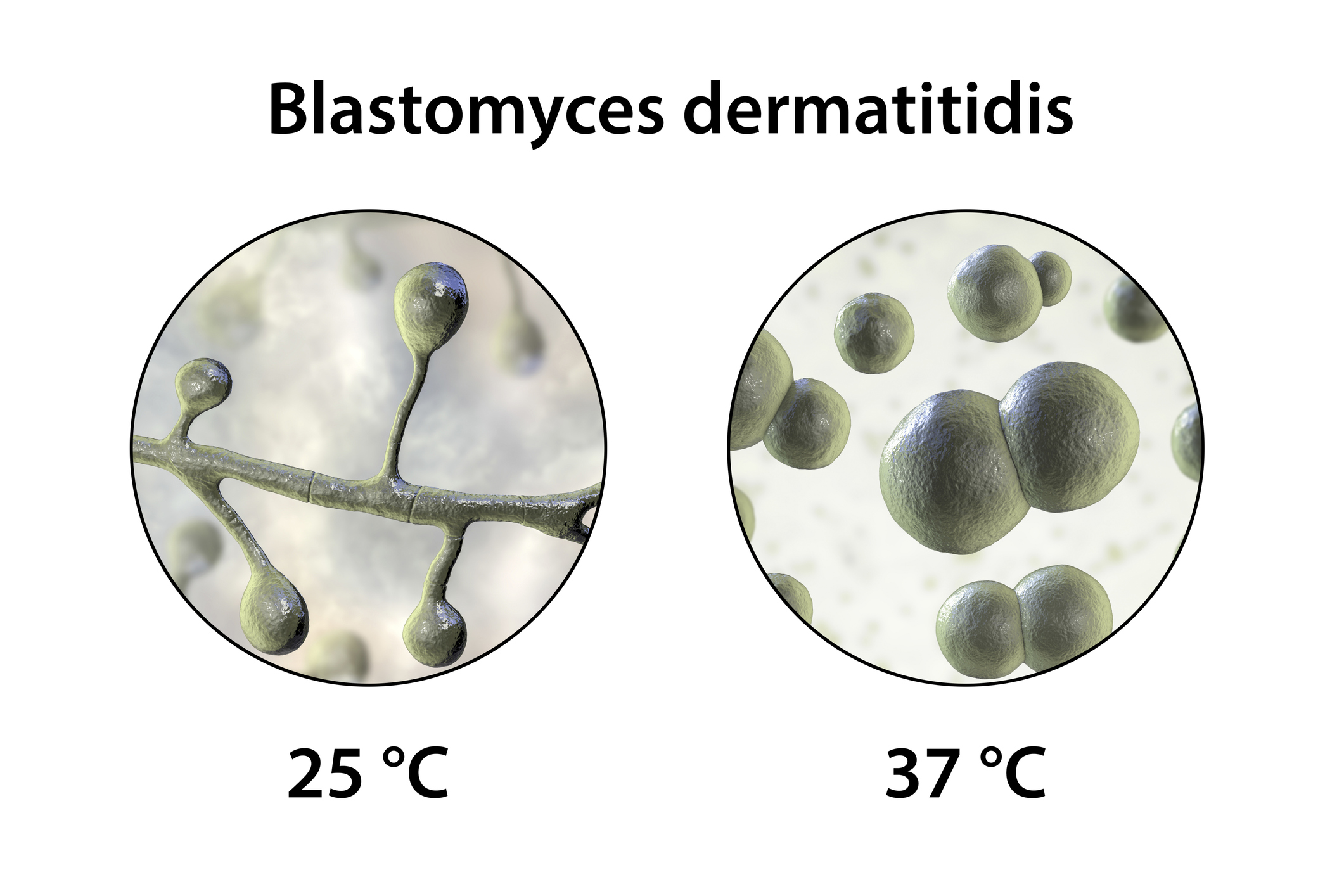What are the types of fungi? Read on to learn about how the medically-important fungi can be categorized.

Fungi are everywhere—they are an important part of our ecosystem. There are thousands of identified fungi. Some of them are helpful, while others cause disease. We don’t know exactly how many different types of fungi there are; some experts estimate that there may be 13 million fungal species! On this website, we only focus on the most common “medically important fungi”—those that cause serious, chronic, or invasive infections. We have organized our discussion of fungi by how they look, grow, and reproduce into three categories: yeasts, molds, and dimorphic fungi, as shown in Figure 1.
Figure 1. One method for organizing fungi. During our launch year, we will provide content on Candida, Aspergillus, Coccidioides, and non-Aspergillus molds. We anticipate adding content on other medically-important fungi in the future.

Yeast
Yeast are single-cell fungal organisms that look like a little ball. They often reproduce by budding, which is when a new, little bud, like a tiny bubble, forms on the side of the yeast cell. That new cell (also known as a daughter cell) then pinches off to form a new yeast cell (See Figure 2). Medically important yeast include Candida and Cryptococcus.
Sometimes, budding yeast cells can remain together and form hyphae, which are stalk-like fungal structures that contain chains of cells (Figure 2). Mycologists distinguish further between “false hyphae“ (pseudohyphae) vs true hyphae, but we won’t get into that detail. One example of an organism that reproduces both by budding and forming hyphae is Candida albicans.
Figure 2. Yeast fungi in several forms. Note the presence of budding yeast cells (lower left corner) as well as hyphae (stalk-like structure originating at around 9 pm).

Molds
Molds are fungi that form those branch-like structures called hyphae. A mass of hyphae is called a mycelium. Molds grow by elongating at the tips of the hyphae to reproduce and produce more hyphae. Medically important molds include Aspergillus and the non-Aspergillus molds, which includes fungi such as Mucormycetes and Fusarium.
Figure 3. Mold image showing hyphae, the stalk-like structures. This is a mold called Fusarium.

Dimorphic Fungi
Dimorphic fungi exist in both mold and yeast forms. Many of the dimorphic fungi are thermal dimorphic fungi, which means they change their shape depending on how warm it is (see Figure 3 below). They exist as molds at lower temperatures and yeast at higher temperatures. For example, several of the endemic mycoses, such as Coccidioides, occur naturally in cool soil or in plants in the mold form. When these fungi release spores that get into the warm mammalian host, they convert into yeast-like forms that can cause disease. Examples of dimorphic fungi include the endemic fungi Coccidioides, Blastomycetes, and Histoplasma.
Figure 4. Blastomyces dermatitidis, a dimorphic fungi. It exists as a mold at low temperatures (the stalk-like hyphae form, left panel) and the ball-like yeast form at a higher temperature (right panel).

At this time, we have specific content available on:

